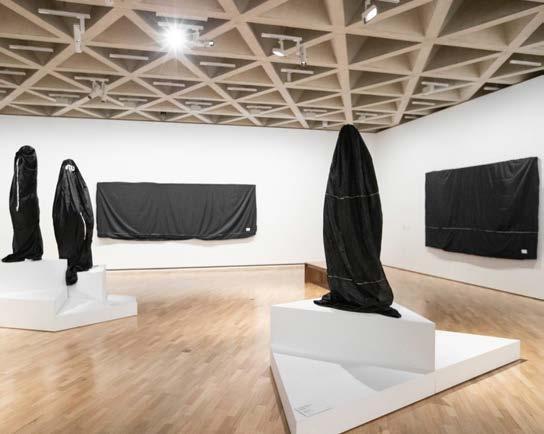
4 minute read
DIRECTOR’S WORD
Gooroo Burri,
The new decade has already proved to be a testing time for us all. In just a few months we have dealt with the bushfires, the smoke, the hail, and then COVID-19 arrived and the world completely changed.
Advertisement
Here at the National Gallery of Australia we had to close in March for the first time in our history. Seeing the black parsilk covers draped over the collection brought a sense of sadness as the art went into temporary hibernation and we realised we would not have visitors enjoying our galleries for several weeks. But it also represented a positive time, a moment for us to pause and reflect. Even though the majority of our staff have worked from their homes around the country it has been an extraordinary time of collaboration and working together.
Running the National Gallery remotely has not been easy, but I have been so proud of how our staff adapted. We held weekly all-staff Skype meetings – with a record 180 people dialling in one week. Like the rest of the world, video conferencing became our new norm: by May we had participated in 26,543 Skype sessions and in 1728 organised conferences with a total of 90,812 minutes (or over 1513 hours) of talk time.
This unprecedented pandemic meant we had to pivot our thinking as an institution. While our doors were physically closed we tailored our exhibitions and content to the digital space: our curators spoke about their favourite works in the collection from their homes, our Learning team transformed our onsite programs to digital excursions, and we created fantastic virtual tours of our galleries. Then there were the amusing social media challenges – the Vincent family’s take on Jackson Pollock’s Blue poles 1952 in LEGO for the #BetweenArtandQuarantine challenge became our most engaged social media post of all time. It was wonderful to see people continue having a dialogue about their favourite works of art. It’s been energising for us at the National Gallery – I love walking around our galleries and seeing how people respond to works of art, and now that’s been transported to the digital space.
People haven’t left their beloved galleries behind – they are bringing art into their homes and using it as an inspiration to be creative.
Not everything came to a standstill on site. The Body Electric was installed and is ready for visitors, and we took advantage of the closure to embark on an ambitious conservation project of Blue poles. This is the
first time since Pollock’s painting was acquired in 1974 that we have been able to spend an extended amount time with the work and analyse it in situ while not on public view.
Visiting Blue poles a few weeks ago when the conservation project began took me back to when I saw the painting for the first time. I was a university student clutching my well-worn copy of Robert Hughes’s The Shock of the New, and when I stood in front of the work everything changed; the picture came alive and jumped off the walls. This is the most ambitious conservation we have undertaken of the work and I hope you enjoy the rich living archive we have created on our new site Jackson Pollock’s Blue Poles: Action Reaction (nga.gov.au/bluepoles), which includes everything you need to know about the work, its history and its connection to Australia. I encourage you to share your personal memories through our social media campaign #MyBluePoles.
Before the closure we were able to launch the Know My Name national art event which showcased the works of 45 artists who identify as women in the national collection on over 3000 sites across Australia. It was such an exciting moment for us and shows that our art can touch the hearts and minds of Australians outside the Gallery walls, which in these times is more important than ever. I would like to thank our Know My Name national art event partners oOh!media for making that happen. The Know My Name exhibition has been rescheduled for later this year.
I was one of the small skeleton staff who continued to work on site (abiding by social distancing). Above my desk is Rosemary Laing’s Jim 2010, and I sat with it during the closure. Though the work turns the world upside down, it brings me a great sense of optimism and reminds me that we all have the ability to turn the world back around.
I want to thank our partners, donors and members for your support during this testing time. This period has been a great testament to the power of art. I have been reminded how art has a place in everyone’s life – it galvanises community and gives us hope.
Nick Mitzevich
I acknowledge and pay my respect to the Traditional Custodians of the Canberra region, the Ngunnawal and Ngambri peoples and their Elders past and present.

Works in Gallery spaces were covered during the closure. Opposite: Director Nick Mitzevich in his office in front of Rosemary Laing’s Jim 2010. Purchased with funds from the Australia Exhibition Patrons Club 2013 © Rosemary Laing










